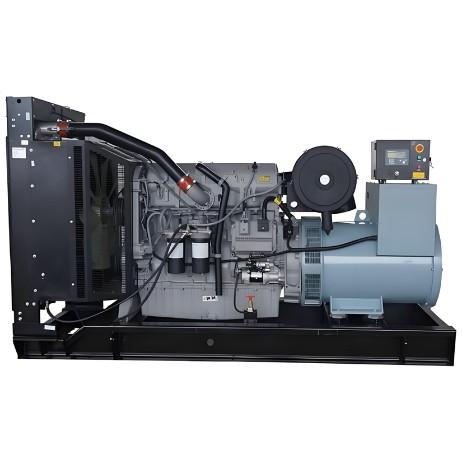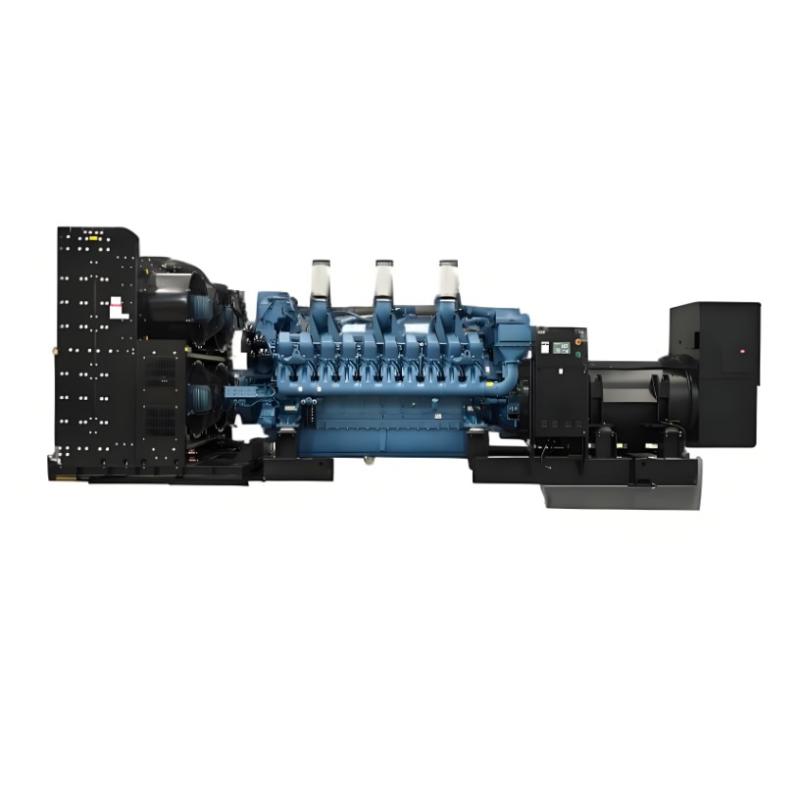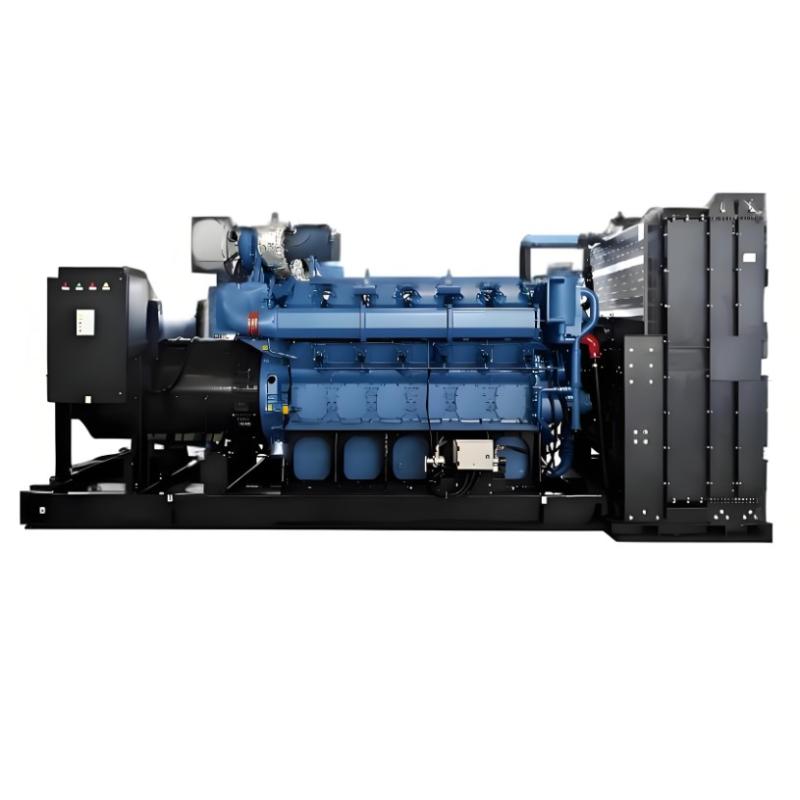Common Generator Faults and Protection Systems
Classification of Generator Faults
Ang mga kasalanan sa generator ay pangunahing nakaklase bilang panloob at panlabas:
Ang mga kasalanan sa prime movers (hal. diesel engines, turbines) ay may kalabutan sa mekanikal at inilalarawan sa disenyo ng equipment, bagaman kailangan nilang maging bahagi ng mga proteksyon ng generator para sa pag-trip.
Types of Internal Faults
1. Stator Faults
Overheating ng Winding: Dahil sa permanenteng overload o breakdown ng insulation.
Phase-to-Phase Fault: Nagaganap dahil sa pagkakabigo ng insulation sa pagitan ng mga phase.
Phase-to-Earth Fault: Pag-leak ng current mula sa phase windings patungo sa stator frame.
Inter-Turn Fault: Short circuit sa pagitan ng magkatabing turns sa parehong winding.
2. Rotor Faults
Earth Fault: Pag-leak ng current mula sa rotor windings patungo sa rotor shaft.
Winding Short-Circuit: Binabawasan ang excitation voltage at tumataas ang current sa wound rotors.
Overheating: Dahil sa unbalanced currents sa stator (hal. single-pole trip, negative phase sequence).
3. Loss of Field/Excitation
4. Out-of-Step Operation
5. Motor Operation
6. Mechanical Faults
Mechanism of Rotor Overheating
Ang unbalanced stator currents (hal. negative phase sequence) ay nagpapalikha ng eddy currents sa rotor sa dalawang beses ng frequency ng sistema (100/120 Hz), nagdudulot ng localized overheating. Ito ay nagpapahina ng rotor retaining wedges at rings.
Types of External Faults
Power System Abnormalities
External Short-Circuits: Mga fault sa grid na nakakaapekto sa operasyon ng generator.
Non-Synchronized Connection: Damage mula sa hindi tamang paralleling ng generator.
Overloads/Overspeed: Dahil sa biglaang pag-shed ng load o pagkakabigo ng control ng prime mover.
Phase Unbalance/Negative Sequence: Nagpapalikha ng rotor eddy currents at overheating.
Frequency/Voltage Deviations: Under/over frequency o voltage na nagpapastres sa mga komponente ng generator.
Generator Protection Devices
Key Protection Schemes
1. Stator Fault Protection
Differential Relay: Nagsusuri ng phase-to-phase at phase-to-earth faults sa pamamagitan ng pag-compare ng input/output currents.
Earth Fault Protection: Gumagamit ng overcurrent relays (para sa resistance grounding) o voltage relays (para sa transformer grounding) upang matukoy ang stator ground faults.
2. Rotor Fault Protection
3. Unbalanced Loading Protection
4. Overheating Protection
5. Mechanical Protection
6. Backup and Supplementary Protection
Reverse power relays na nagpapahinto ng motor operation, habang ang differential relays para sa stator earth faults ay nagbibigay ng primary fault detection (tingnan ang Figure 1 para sa typical connections).
Differential Relays: Nag-compare ng currents sa parehong dulo ng stator windings upang matukoy ang internal faults.
Protection Principles
Zero-Sequence Voltage Detection: Nakikilala ang inter-turn faults sa pamamagitan ng pagsusuri ng voltage imbalances gamit ang voltage transformers (VT).
Grounding System Adaptation: Ang mga protection schemes ay nag-iiba depende sa stator grounding methods (resistance o transformer grounding), gamit ang CTs o VTs upang masensya ang fault currents/voltages.

Rotor Winding Fault Protection Mechanisms
Ang short-circuit faults sa wound rotor winding ay pinoprotektahan ng overcurrent relays, na nagtrip sa generator kapag natukoy ang abnormal na current surges. Ang earth faults ay isa pa ring risk sa rotor windings, bagaman ang kanilang proteksyon ay nangangailangan ng espesyal na mga approach.
Sa malalaking thermal generators, ang rotor o field windings ay karaniwang walang grounded, ibig sabihin ang single ground fault ay hindi nagpapalikha ng fault current. Ngunit, gayunpaman, ang ganitong fault ay nagtaas ng potential ng buong field at exciter system. Ang extra voltages na ininduce sa pamamagitan ng pagbubukas ng field o main generator breaker—lalo na sa panahon ng fault conditions—ay maaaring mag-stress sa field winding insulation, na maaaring maging sanhi ng second ground fault. Ang second fault ay maaaring magresulta sa localized iron heating, rotor distortion, at dangerous mechanical unbalance.
Ang rotor earth-fault protection kadalasang gumagamit ng relay na nagsusuri ng insulation sa pamamagitan ng pag-apply ng auxiliary AC voltage sa rotor. Alternatibong, ang voltage relay ay ginagamit sa serye ng high-resistance network (karaniwang combination ng linear at non-linear resistors) sa rotor circuit. Ang sentral na punto ng network ay konektado sa ground sa pamamagitan ng sensitive relay coil (ANSI/IEEE/IEC code 64). Ang modernong protection schemes ay lalo na'y pabor sa combinations ng linear at non-linear resistors para sa improved fault detection at insulation monitoring.
Loss of Field and Overexcitation Protection Mechanisms
Ang loss of field protection ay gumagamit ng relay upang matukoy ang mga pagbabago sa reactive power flow. Ang typical scheme ay gumagamit ng Offset Mho (impedance) relay—single-phase device na supplied ng generator current transformers (CTs) at voltage transformers (VTs)—upang sukatin ang load impedance. Ang relay ay nagtrigger kapag ang impedance ay nasa loob ng operating characteristic. Ang timing relay ay nagsisimula ng generator tripping kung ang leading reactive power ay umiiral para sa 1 segundo (standard timing).
Overexcitation Protection
Upang maiwasan ang core saturation sa panahon ng startup at shutdown, ang overexcitation protection (ANSI/IEEE/IEC code 59) ay ipinapatupad, batay sa relationship:B = V/f
kung saan:
B = magnetic flux density (tesla, T)
V = applied voltage (volts, V)
f = frequency (hertz, Hz)
Ang core flux ay dapat manatili sa ilalim ng saturation point, ibig sabihin ang voltage lamang ay maaaring tumaas proporsiyonal sa frequency (speed). Ang rapid excitation ay nagpapataas ng risk ng overexcitation, na natutukoy ng Volts per Hertz relays. Ang mga relays na ito ay may linear characteristics at nagtrip kung ang V/f ay lumampas sa set thresholds.
Stator and Rotor Overheating Protection
Stator Windings & Bearings: Temperature monitoring sa pamamagitan ng resistance temperature detectors (RTDs) at thermistors.
Stator Phase Unbalance: Time-inverse overcurrent relays na set sa maximum heat tolerance ng rotor.
Negative Phase Sequence Protection: Nagbibigay ng seguridad sa machine mula sa rotor overheating na dulot ng unbalanced stator currents, na nagpapalikha ng damaging eddy currents sa rotor.
Ang reliable protection systems ay mahalaga upang mapaliit ang damage at repair time, dahil ang generators ay isa sa mga pinakamahal na component ng power system.

Ang proteksyon na ito ay gumagamit ng relay na nagsusuri ng currents sa dalawang phases sa pamamagitan ng current transformers (CTs), tulad ng ipinapakita sa Figure 2. Ang protective settings ay nadetermina sa pamamagitan ng maximum time na kaya ng rotor na maranasan ang overheating, na inilalarawan sa equation K = I²t (derived from Joule's law), kung saan I ay ang negative sequence current at t ang duration.
Ang manufacturer-specified typical time-current curves para sa kondisyong ito ay nag-iiba depende sa uri ng prime mover, tulad ng ipinapakita sa referenced diagram.

Reverse Power, Out-of-Step, and Frequency/Voltage Protection Systems
Reverse Power Protection (ANSI/IEEE/IEC Code 32)
Ang proteksyon na ito ay gumagamit ng power directional relay upang masuri ang load ng generator, na supplied ng CTs at VTs (tingnan ang Figure 3). Ang relay ay nagactivate kapag natukoy ang negative power flow—na nagpapahiwatig na ang generator ay humihingi ng power mula sa grid (motor operation)—at nagtrigger ng tripping upang maprevent ang turbine damage.
Out-of-Step Protection
Idinisenyo upang matukoy ang mga disturbance sa power system (hindi generator faults), ang proteksyon na ito ay nakikilala ang pole slipping kapag ang generator ay nawalan ng synchronism. It trips the generator breakers while keeping the turbine running, allowing re-synchronization after the disturbance clears.
Frequency and Voltage Protection
Under/Over Frequency Protection (ANSI/IEEE/IEC Code 81)
Overfrequency: Dahil sa biglaang pagshed ng load, nagreresulta sa overvoltage kung hindi ito managed. Ang generator controls ay dapat i-adjust ang output upang tugma sa demand.
Underfrequency: Nagreresulta sa insufficient generation para sa connected loads, nagreresulta sa voltage drops, increased excitation, at rotor/stator overheating. Ang load shedding ay critical upang maiwasan ang system collapse.
Under/Over Voltage Relays (Codes 27/59)
Nagsusuri at kontrol ng voltage deviations upang maprotektahan ang equipment mula sa stress o damage.
Phase Supplementary Start Protection
Nagpapahinto ng pagstart ng generator sa fault o loaded condition. Low-set overcurrent relays engage only when frequency is below 52 Hz (for 60 Hz systems) or 42 Hz (for 50 Hz systems), ensuring protection during startup transients.
External Short-Circuit Protection
Overcurrent relays (50, 50N, 51, 51N) detect and clear faults on the external network, safeguarding the generator from excessive fault currents.
These protection schemes collectively address operational anomalies—from power flow reversals to system-wide disturbances—ensuring generator integrity and grid stability.
























